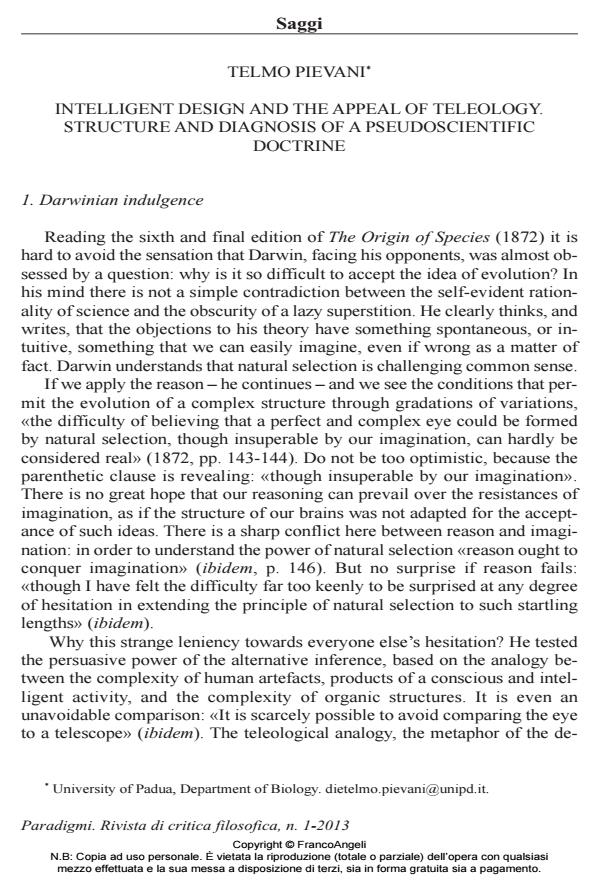Intelligent design and the appeal of teleology. structure and diagnosis of a pseudoscientific doctrine
Titolo Rivista PARADIGMI
Autori/Curatori Telmo Pievani
Anno di pubblicazione 2013 Fascicolo 2013/1
Lingua Italiano Numero pagine 14 P. 151-164 Dimensione file 172 KB
DOI 10.3280/PARA2013-001010
Il DOI è il codice a barre della proprietà intellettuale: per saperne di più
clicca qui
Qui sotto puoi vedere in anteprima la prima pagina di questo articolo.
Se questo articolo ti interessa, lo puoi acquistare (e scaricare in formato pdf) seguendo le facili indicazioni per acquistare il download credit. Acquista Download Credits per scaricare questo Articolo in formato PDF

FrancoAngeli è membro della Publishers International Linking Association, Inc (PILA)associazione indipendente e non profit per facilitare (attraverso i servizi tecnologici implementati da CrossRef.org) l’accesso degli studiosi ai contenuti digitali nelle pubblicazioni professionali e scientifiche
Uno studio filosofico e cognitivo degli argomenti addotti dai sostenitori dell’Intelligent Design (ID) mostra quanto essi siano attentamente predisposti per risultare attraenti a una mente, come quella umana, fortemente persuasa da sistemi di credenze di tipo teleologico - come già intuito da Darwin - e dall’attribuzione di intenzionalità e di finalità ai fenomeni naturali. Descriviamo qui come la struttura epistemica dell’ID sia consapevolmente plasmata da questa attrazione cognitiva presente in noi "nati per credere" e sia poi implementata da una forte familiarità con le regole talvolta fuorvianti dei dibattiti pubblici. Viene quindi delineata una possibile procedura di valutazione epistemologica di questa forma di pseudoscienza, a partire da gradi successivi di concessione del "beneficio del dubbio".
Parole chiave:Disegno intelligente, Pluralismo epistemologico, Ragionamento teleologico, Richiamo cognitivo, Unicità della biologia evolutiva.
- Geoethics Telmo Pievani, pp.57 (ISBN:9780127999357)
Telmo Pievani, Intelligent design and the appeal of teleology. structure and diagnosis of a pseudoscientific doctrine in "PARADIGMI" 1/2013, pp 151-164, DOI: 10.3280/PARA2013-001010